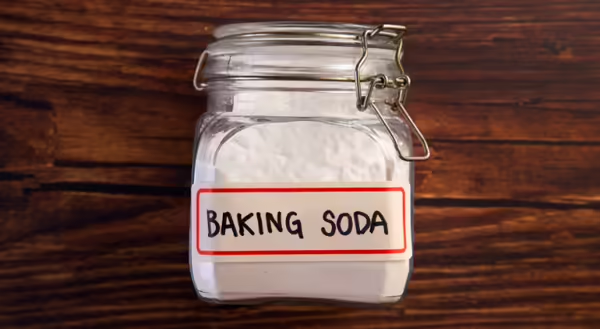
In the world of baking, there are two ingredients that every home baker must have: baking powder and baking soda. They look similar, they sound similar, and they act similar so what’s the difference?
Let’s start with the science. Baking soda is sodium bicarbonate and is a base on the pH scale. Do you remember that science experiment you did in school where you made a volcano erupt? That bubbly chemical reaction was caused by baking soda (base) mixing with vinegar (acid) to produce carbon dioxide. This same reaction is what causes our baked goods to rise. But the recipe must include baking soda and some type of acid, such as vinegar, buttermilk, brown sugar, yogurt or lemon juice. More baking soda doesn’t necessarily equate to a bigger rise. Too much without enough acid can give it a metallic taste.
Baking powder, on the other hand, contains baking soda but also has cream of tartar and cornstarch making it not as strong as baking soda. You may have noticed that most containers will say “double acting.” This means that the first leavening (rise) happens when the baking powder is mixed with wet ingredients; have you ever noticed bubbles when stirring your wet ingredients into the dry ingredients when making pancake batter? The second leavening occurs when the baking powder is heated; that’s what gives you fluffy pancakes! Since it contains cream of tartar, which is an acid, it doesn’t need additional acidic ingredients. Why then do some recipes call for both baking soda and baking powder?
That’s a good question. Sometimes there is simply not enough acid in the recipe to get the rise that is needed. That’s when baking powder steps in to give it a little more “umph!” It also allows some tanginess of the acid, if that’s what you’re going for. Baking soda and baking powder are not interchangeable. If you don’t have baking soda, you could try using baking powder and tripling the amount. If you don’t have baking powder, you could try using baking soda but divide the amount by 4 (so 1 teaspoon baking powder would be ¼ teaspoon baking soda) and add twice that amount of cream of tartar (so ½ teaspoon cream of tartar). It won’t be perfect so a run to the store or to your neighbor may be the better option! With a little food science knowledge, you can become a better baker.
Source: Arm & Hammer. Baking powder versus baking soda.
About the Author
Jenna Smith is a Nutrition and Wellness Educator with University of Illinois Extension, serving Livingston, McLean, and Woodford Counties. Smith uses her experience as a registered dietitian nutritionist to deliver impactful information and cutting-edge programs to Livingston, McLean, and Woodford Counties and beyond.